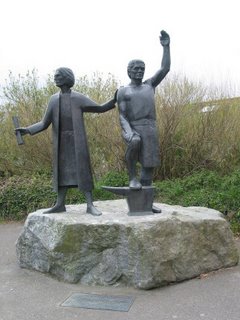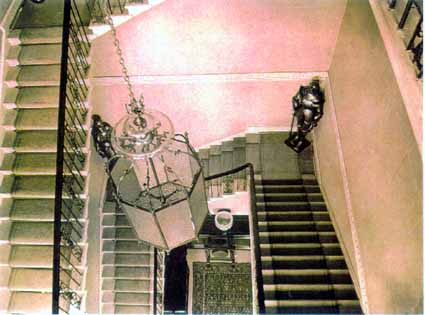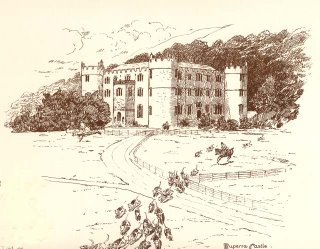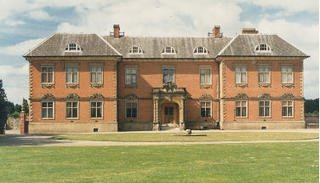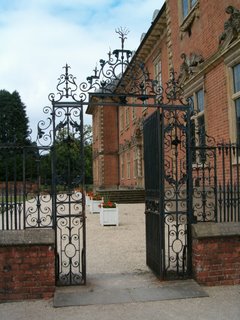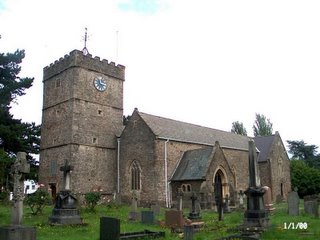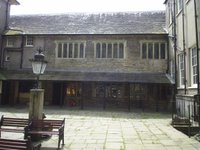
To say that
Sir John Morgan's father's name was a bit of a mouthful is to put it mildly. There was a lot of character in Welsh names in the 15th century, but it could take an awful long time to actually say them. A name was rather like a family tree. Using a series of 'aps' ('son of') the lineage was proudly displayed, but was surely enough to test the patience of the most polite of readers or listeners. John's father, for instance, went by the name of Ieuan ap Morgan ap Llywelyn ap Morgan ap Llywelyn ap Ifor of Tredegar.
It was John who decided to drop the series of 'aps' and decided on a surname, as Anthony Pickford writes in 'Between Mountain And Marsh' (1946)
"The descendants of Llywelyn ap Ifor, living in some form of house at Tredegar, decided that their name was to be that of the old family Christian name, the old royal name of Morganwg; the famous name of Morgan."John was created a
Knight of the Holy Sepulchre (possibly c1448). He had visited the Holy Lands where the Crusades had been fought. At this time, pilgrimage was becoming a popular venture among noblemen. Rather like today's 'package holidays' it was entirely possible, for a price, to have everything arranged for you; from the transport, to the food, to the guide. Not all 'packages' were as attractive as they seemed; noblemen were advised to use Venetian ships or risk ending up at the bottom of the sea!
The behaviour of certain noblemen on pilgrimage often left a lot to be desired. Fifteenth century graffiti was a problem and it was not particularly difficult to identify the culprits. We can only hope that Sir John did not follow the disrespectful trend of noblemen that chose to carve their family crest on the walls inside the Holy Sepulchre itself.
Upon returning to Wales, Sir John cemented his fortune and influence, and helped guide the Morgans firmly back into the ascendancy, after the unfortunate aftermath of the Glyndwr rebellion. He married
Jenet, the daughter and heiress of
John David Matthew of Llandaff. The Matthew family were very influential and the match seems to have been a beneficial and successful one; ten children resulted from it.
Sir John was a large figure in South East Wales in more ways than one. He was locally powerful (even in pre-Tudor times he was appointed Steward of Gwynllwg) and physically immense. Tales of his martial prowess survive in the songs of his bard, as do descriptions of his stature: he was known as
'Y Marchog Tew' ('The Fat Knight'). His bard was, perhaps, no less statuesque, as he went by the name of
'Gwilym Tew' ('Fat William'). This heavyweight combination has left us with a vivid impression of Sir John Morgan of Tredegar. Gwilym called him
'The Widespread Wine of Wentloog' for his generosity in the locality, but perhaps Sir John could afford to be generous because of rather shady dealings that got him into trouble with the authorities on more than one occasion...
On 22 February 1476, Sir John was bound to the King in a bond of 300 marks which would only be cancelled if he appeared in chancery within three weeks of easter and did not leave London without the King's express permission; and, as stated by Ralph A Griffiths ('The Principality of Wales In The Later Middle Ages, 1972)
"in the following June he entered into a bond of 500 marks with Duke Henry of Buckingham to ensure his good conduct in the lordship of Newport." Good conduct was the very last thing on Sir John's mind in 1485, when, following something of a Morgan tradition, in the footsteps of his ancestors
Sir Morgan ap Maredudd and
Llywelyn ap Morgan, he supported rebellion.
An early supporter of
Henry Tudor's claim to the throne of England, Sir John rallied to the Red Dragon Standard when Henry landed in Milford Haven in August 1485. It is likely that such a rich, influential and firm Tudor supporter, with such a reputation for competence on the battlefield (even if we only know this thanks to the flattering words of a paid poet) would have been present at the Battle of Bosworth Field on 22 August. History is full of 'what ifs'. What if Richard III had won the Battle of Bosworth Field? What sort of building would Tredegar House be today? Would it even exist? Fortunately for the Morgans, at last, one of their rebellions proved successful.
When Henry Tudor was crowned
King Henry VII it was of great benefit to the Morgans of Tredegar. Sir John received reward for his early support almost immediately. On 7 November 1485 he was appointed by the new king 'steward and receiver of Ebboth for life', granted the office of Sheriff of Wentloog and Newport, and was made Steward of the Machen Commote.
His elevation to officer of the Tudor crown placed Sir John Morgan's influence and power at a new height. To better reflect this newly found status it is likely that, sometime after the Battle of Bosworth Field (perhaps c1490), he commissioned the building of a new house at Tredegar. A wing of Sir John's stone manor house still exists. It is now the oldest part of the present day Tredegar House.
In retrospect, making Sir John 'steward and receiver of Ebboth for life' was not the wisest move made by the incoming Tudor dynasty. Certain taxes that were meant to flow through Sir John to the crown only got as far as Tredegar House. There was a distinct lack of flowing. It would appear that 'The Fat Knight's' purse grew fatter at the expense of the crown treasury, and
"on 14 May 1491 he was reprimanded accordingly" (Griffiths, 1972)
Walking around the much remodelled remains of Sir John Morgan's house at Tredegar today, it is tempting to picture a Falstaffian figure, being praised to the Heavens by his adoring bards (much as Dafydd ap Gwilym did for
Ifor Hael), enjoying his new status, and all the while hoping that the crown would not catch up with his latest scheme to enrich himself at their expense. But, if we take c1490 as the date of the building of his new stone manor house, it is unlikely that Sir John enjoyed living there for very long.
His will is dated 26 October 1491 and it is likely that he died soon after that, possibly in the following year. He was buried at St Woollos. His alabaster tomb was, according to Octavius Morgan, desecrated by Parliamentarian troops during the Civil War; only fragments of his effigy survive, but, even after centuries of damage by time and fate, the image is still recognisably Sir John Morgan of Tredegar; it shows a figure wearing the Lancastrian collar, with an unmistakable little paunch underneath his armour.
Sir John MorganDied: c1492
Married: Jennet, daughter of John David Matthew of Llandaff
Children Included:
Sir Morgan ap John of Tredegar (I know, I know, the 'aps' are back, but they do not last!)
Thomas Morgan of MachenHe acted as Esquire to the body of King Henry VII and built Plas Machen after his lord gained the throne of England at Bosworth Field in 1485. The Morgans were rewarded and were allowed to purchase the manors of Bedwellty and Mynyddislwyn. They were rather unpromising lands back then, but the soil contained rich mineral deposits that added greatly to the fortune of future members of the Morgan family.Thomas married Elizabeth, daughter of Sir Roger Vaughan of Brecon, and many of their children were set up in estates of their own (the Morgans really were more of a clan than simply a family and had cadet branches all over South Wales), their children included: Rowland (who became sheriff in 1588), Reynold (of Llanfedw), John (of Bassaleg) and Edmund (of Bedwellty).Thomas's grandson, another Thomas, built Ruperra Castle in 1626.John (m. Margaret, daughter of J. Richards of the Duffryn)
Lewis (d. 1491)
Isabella (m. James Kemeys of Llanvihangel-Vach, Glamorgan)
Click to view previous Tredegar owners in this series:
6.
Ieuan ap Llywelyn ap Morgan (father of Sir John)
5.
Llywelyn ap Morgan (lost Tredegar in 1402)
4.
Morgan ap Llywelyn (died c1384)
3.
Ifor Hael of Gwern y Cleppa2.
Llywelyn ap Ifor and Angharad1.
Sir Morgan ap Maredudd (died c1331)
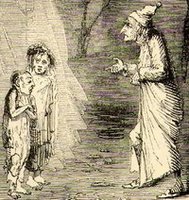 With the decorations up and the carols a-blaring, Tredegar House opened its doors last night for the first time this festive season: the butler was prompt in answering the front door; Lord Tredegar welcomed guests in the Dining Room with his usual matchless grace; there was singing and dancing aplenty in the New Hall and Gilt Room; a storyteller weaved tales in the Best Chamber; a feather boa draped Olga, Lady Tredegar chatted with visitors in the King's Room; Tiny Tim limped about looking for sympathy; Mr Bumble was on the hunt for orphans for the workhouse; the cook seemed suspiciously jolly in the Kitchen; Father Christmas worked very hard in the grotto, and Scrooge showing no sign of getting into the spirit of things, attempted to sleep through it all in his bed chamber.
With the decorations up and the carols a-blaring, Tredegar House opened its doors last night for the first time this festive season: the butler was prompt in answering the front door; Lord Tredegar welcomed guests in the Dining Room with his usual matchless grace; there was singing and dancing aplenty in the New Hall and Gilt Room; a storyteller weaved tales in the Best Chamber; a feather boa draped Olga, Lady Tredegar chatted with visitors in the King's Room; Tiny Tim limped about looking for sympathy; Mr Bumble was on the hunt for orphans for the workhouse; the cook seemed suspiciously jolly in the Kitchen; Father Christmas worked very hard in the grotto, and Scrooge showing no sign of getting into the spirit of things, attempted to sleep through it all in his bed chamber.







